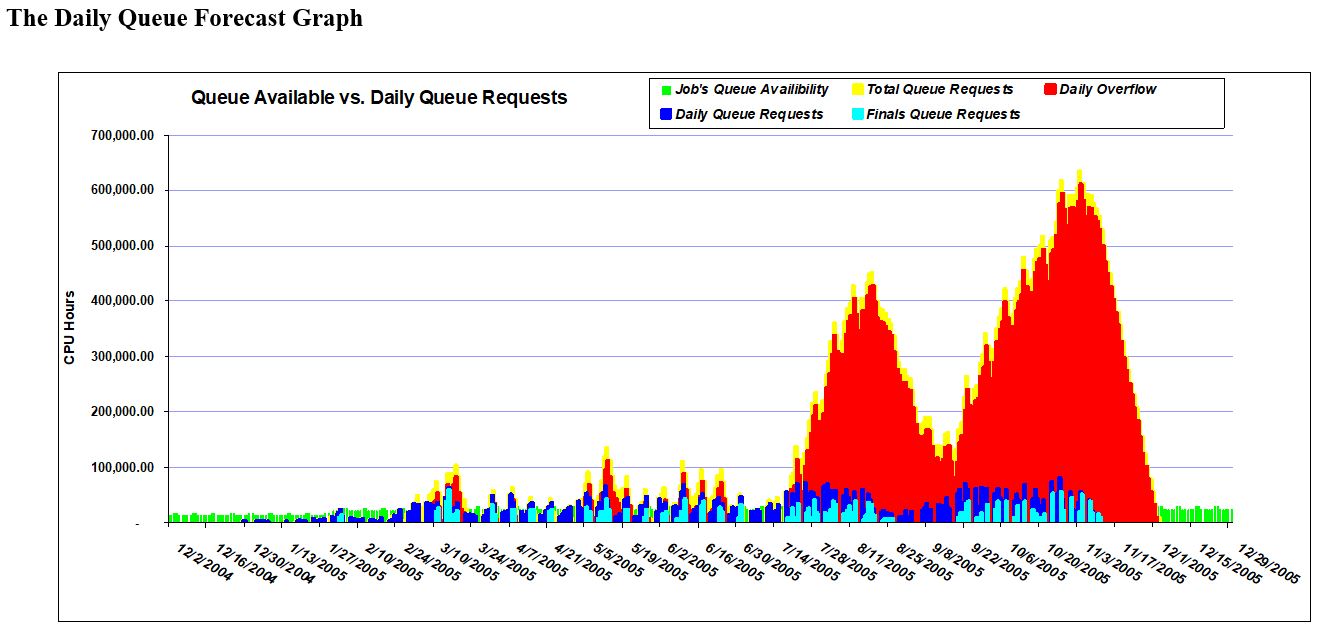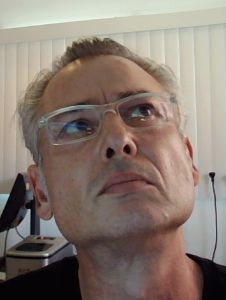R&H VFX Artist & Financial Analyst

This is part two of my employment at Rhythm & Hues Studios, the Academy Award winning feature film VFX and animation studio. I initially worked at R&H as a member of the video game industry. I was a founding employee, a software developer, for the R&H Games Division, which at this point in time, about 2002, has closed. Rhythm & Hues Studios no longer made games.
By 2002, I had just been laid off for the first time in my life from Pandemic Studios. I had been the game play and AI developer on a PlayStation2 superhero themed volleyball game, which was canceled. I reluctantly took that game developer job, after spending the 90's being overworked by interactive media and game studios. From the ambition experienced developing the first Internet Live Video Infrastructure, and then seeing it all disappear with the DOTCOM bust, writing software for 3D video games felt like a step backwards.
I wanted to start another company at some point, after the moderate success of my high school video game studio. After some effort, I began a new position at Rhythm & Hues Studios as a Technical Digital Artist, at less than half my previous salary, with an additional agreement: I was simultaneously attending an EMBA program at night a few days a week; in exchange for my professional seniority, the lower salary granted me a hard cutoff of 40 hours a week.
I worked in the Tracking and Match Move Department. When visual effects are added to filmed media, one of the first requirements is to recover the 3D position and path of the camera for every frame of the motion sequence. After that, we know the position of the camera for every frame. Next, the set, set furniture, props, and often the actors themselves need to have their 3D position recovered for every frame. That is how the digital artists later in the VFX pipeline know where to put effects - the members of the Tracking and Match Move Department previously figured all this out and that information is available for these other VFX specialists to build their effects on top.
Due to my background as an interactive 3D graphics software developer, I started talking with Eugene Vendrofsky, one of R&H's senior developers, about how his software worked that enabled the Trackers to recover the camera 3D position and path from a series of frames. Eugene was using Optical Flow, trigonometry and statistics to get his results, and to my surprise I was completely following along with his algorithm descriptions. As a result of my natural desire to automate what I do, I wrote a new user interface for the Trackers and Match Movers for the studio's in-house animation software that automated a good 80% of the Trackers and Match Movers work. That little innovation had some controversy, unfortunately. The studio used Tracking and Match Moving as an entry level position for digital artists, so the department was not small. However, my UI made that department need a substantially smaller number of members, which made the Tracker and Match Moving Department Manager unhappy. He switched departments to become a Lighter, and I became a Tracking & Match Move Supervisor, while the (now smaller) department continued with no manager.
Meanwhile, I began my MBA studies at night and on weekends at Chapman University. I am still unsure if my decision to attend Chapman over USC or UCLA MBA Programs was the best decision. I was accepted to all of them, but the campus tours sold me on Chapman as more inviting. Both USC and UCLA stressed their high competitiveness, seemingly implying there would be no life or possibility of working in addition to their MBA studies. Plus, Chapman had a capstone several week tour of China sponsored by IBM of China at the end of the MBA. Once I started Chapman's MBA classes, I was expecting a much harder time than I found. At midterms I was informed in secret, and then after the first semester the competition for head of the class was announced, I was one of the top three in the class.
One of the incredibly great things about working in the VFX industry is the free food. Because the studio would love if people never left the studio for meals, high quality free breakfast, lunch and dinner are commonly provided. The lunch room is a social space, and one day I found myself discussing my fascination and enjoyment with my MBA studies with the President of the studio, John Hughes, and the CFO, David Weinberg. That conversation continued for a few days, when at the conclusion one day John tells David that he wants me working for him in the Finance Department. And that's how I became a financial analyst for feature film VFX.
A feature film VFX studio typically has somewhere between two to six feature films moving through the studio, and perhaps a similar number of commercials receiving VFX. Rhythm & Hues organized productions with a rough structure of studio management, individual film/commercial production management, and then a large digital artist pool, around 2000 people, who work on the various productions. Studio management allocated storage, workstations, render servers, and digital artists to the productions. How storage, workstations, servers, and digital artists are assigned to productions was a continual negotiation between studio management and productions over the resources to do their jobs. Problem was, no formal analysis of requirements and usage had been carried out. In the absence of formal numbers, both sides tended to have their own numbers and negotiations wasted time debating the validity of numbers. My job was to bring formal numbers and a clearly defined methodology for studio resource allocation. I think I did an amazing job.
To support the negotiations over digital artists, productions give an "A-D" quality score to every task completed by a digital artist. Likewise, every task is also given an "A-D" difficulty score. Over time and productions, digital artists generate a "skill score" that is used during production and studio negotiations over resources. I wrote a statistical forecasting algorithm that analyzed three years of accounting data plus all these "A-D" quality and difficulty task tracking numbers. In order to calculate the several hundred megs worth of data, I wrote a C++ plugin to Excel that both accessed the studio's internal accounting and task tracking databases, as well as did the statistics themselves because that amount of data far exceeded what Excel could hold. Excel was the tool used because that is the tool used by the VFX producers and studio management - they were not about to change and use something other than Excel. Film producers - so entitled! (joke!)
 An example of one of the outputs: a forecast of the Job Queue over a single production. One can see over the months of a VFX production there are five brief periods where the production's digital artists are generating more work than the render servers can perform. Then a giant glut of work, all that red, hits the render farm as the film starts finaling shots and delivering. My resource forecasting system generated this forecast graph, as well as more detailed forecasts for storage, workstations, servers, as well as the time and skill proficiency expected from a specific digital artist if assigned some task. It could tell the expected learning rate of a digital artist at tasks they'd not done before. The system included process modeling, with critical path and dependent task mapping. It could accurately tell the time, specific people and resources required to meet specific deadlines. The system was used "live" during negotiations, so it had to be capable of fast recalculations as various what-if scenarios were explored. It allowed combining forecasts, regardless of the staggered start and end dates of the productions being combined. It basically enabled a level of insight into the studio's operations that was no less than a little revolution. The studio was able to prove to investors and lenders a repeating and dependable institutional learning curve enabling the studio greater financial leverage and lowered working capital interest rate.
An example of one of the outputs: a forecast of the Job Queue over a single production. One can see over the months of a VFX production there are five brief periods where the production's digital artists are generating more work than the render servers can perform. Then a giant glut of work, all that red, hits the render farm as the film starts finaling shots and delivering. My resource forecasting system generated this forecast graph, as well as more detailed forecasts for storage, workstations, servers, as well as the time and skill proficiency expected from a specific digital artist if assigned some task. It could tell the expected learning rate of a digital artist at tasks they'd not done before. The system included process modeling, with critical path and dependent task mapping. It could accurately tell the time, specific people and resources required to meet specific deadlines. The system was used "live" during negotiations, so it had to be capable of fast recalculations as various what-if scenarios were explored. It allowed combining forecasts, regardless of the staggered start and end dates of the productions being combined. It basically enabled a level of insight into the studio's operations that was no less than a little revolution. The studio was able to prove to investors and lenders a repeating and dependable institutional learning curve enabling the studio greater financial leverage and lowered working capital interest rate.
This resource forecasting system was used across quite a few films. I have the notes and some scattered documents from using various versions of the system on these films:
- Around the World in 80 Days (the remake with Jackie Chan)
- Electa
- Garfield 1 & 2
- Scooby Doo 1 & 2
- Riddick
- Ice Princess
- Charlotte's Web
- Superman
- Chronicles of Narnia
As the forecasting system became finalized, my necessary attention to it became less and less. My MBA studies were going great, still competing for head of the class. I became a production fire fighter, a person assigned to productions by studio management for the purpose of solving critical time sensitive and potentially expensive issues. Being a former studio software developer intimate with the studio's internal code, a former production savvy digital artist, and now a financial analyst for the studio - I had a unique set of talents that could solve issues while being mindful of production politics and the studio's finances. I worked in that role until a bit after I graduated my MBA program.
I graduated 2nd in my class, with a Master's Thesis on how to automate the standardized VFX actor replacement effect used all the time in VFX. My Master's Thesis was an early incarnation of what later became known as deep fakes, and the undoing of my future startup...
